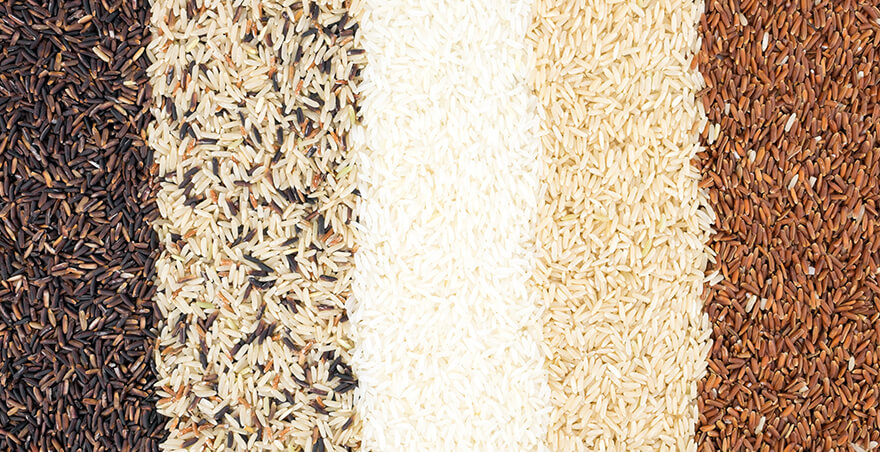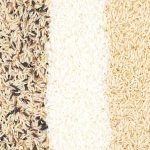What Makes Basmati Rice Unique?
Basmati rice is a long-grain variety prized for its distinctive flavor and aroma. It is very popular in Indian and Middle Eastern cuisine because of its fluffy texture and nutty flavor.
Traditional Basmati rice, which is the best type of Basmati because of its buttery flavor and aroma. This type of traditional basmati rice is grown in the foothills of the Himalayas. The hybrid variety known as Pusa Basmati, which was developed by Indian scientists, is another type that is renowned for its thin grains and excellent cooking qualities.
Super Kernel Basmati, which is grown in Pakistan and noted for its long, slender grains and exceptional flavor, and 1121 Basmati, which is one of the longest varieties of Basmati rice and has a distinct aroma, are two other popular varieties of Basmati rice.
Write about Different Varieties of Basmati Rice?
The climate, soil, and quality of the water all contribute to the unique characteristics of Basmati rice as a whole. It is a regular fixture in many homes and restaurants all around the world of its unique creamy taste and of such a great quality.
There are several varieties of Basmati rice kinds available, and each has its own distinctive qualities and flavor qualities. The most common varieties of basmati rice include:
Pusa Basmati: One of the hybrid varieties of Basmati rice created by Indian researchers is the Pusa basmati. It features thin grains and superior cooking capabilities.
1121 Basmati: This variety of Basmati rice is one of the longest grains and has a distinct aroma. It is popular for usage on special occasions because of its great quality.
Super Kernel Basmati: This variety of Basmati rice is grown in Pakistan and has long, slender grains and superior flavor.
Dehradun Basmati: This variety of Basmati rice is known for its soft texture, excellent cooking qualities and different flavors of aroma. This rice is grown in the Dehradun region in india.
Kasturi Basmati: This is a short-grained variety of Basmati rice that is known for its sweet flavor and aroma.
Traditional Basmati Rice
Long-grain rice known as traditional basmati is prized for its delicate, nutty flavor and fragrance. It is the original and most widely known variety of Basmati rice. These rice has long, slender grains that become fluffy and separate after cooking. It is a popular component in meals like biryani, pilaf, and curry and is an essential in Middle Eastern and Indian cooking. A number of dishes benefit from the distinctive flavor and texture of traditional basmati rice.
Brown Basmati Rice
Brown basmati rice has a chewier texture and nuttier flavor than white basmati rice because it contains rice bran and germ. It is the healthier option compared to white Basmati rice as it contains more fiber, vitamins, and minerals. While it takes longer to prepare than white Basmati rice, the result is a delicious, nutty rice that complements a variety of recipes. The chewy texture and nutty flavor of this particular variety of rice make it popular in salads and stir-fries.
White Basmati Rice
White Basmati Rice is a Long-grain basmati rice that has a delicate flavor and aroma and is polished and refined. It has a tender texture and a bright white color because its outer bran layer has been removed. Steamed rice, biryani, and pilaf are just a few dishes that use white Basmati rice. It is a common side dish or base for other dishes and is a common ingredient in Indian and Middle Eastern cuisine.
Golden Sella Basmati Rice
Golden Sella Basmati Rice is a kind of parboiled and partly boiled basmati rice. It is tougher than white basmati rice and has a golden color. The rice is healthier because the parboiling process helps it retain more nutrients. Golden Sella Basmati rice is commonly used in biryani and pulao because of its nutty flavor and aroma. Likewise a flexible fixing can be utilized in various dishes, from servings of mixed greens to galoshes.
Super Basmati Rice
The extra-long grains, delightful aroma, and exceptional flavor of Super Basmati Rice make it a premium quality Basmati rice. Rice of this high quality is carefully grown, aged, and processed to guarantee its premium quality. Super Basmati rice is often used to make biryanis, pilafs, and other festive dishes. It is a well-liked option for festivities and special events. It is a favorite among rice lovers due to its delicate flavor and aroma, long grains, and elegant appearance.
Cooking Tips for Basmati Rice
Although Basmati rice can be challenging to cook, you can always achieve perfectly cooked rice by following a few straightforward guidelines. To get rid of excess starch, which can make the rice sticky, thoroughly rinse it. To assist the grains fluff up and guarantee a uniform cooking, soak the rice for at least 30 to 60 minutes prior to cooking. Add salt, butter, or oil to enhance the flavor, and make the rice-water ratio 1:1.5. Before serving, fluff the rice with a fork after it has been cooked on low heat.
Conclusion
In Conclusion, Basmati rice is a common and adaptable component in numerous countries and cuisines. Long-grain rice with a delicate taste, nutty fragrance, and distinctive texture. The nutty and crunchy texture of Brown Basmati rice and the golden-colored and harder texture of Golden Sella Basmati rice are just two examples of the distinctive qualities that each variety of Basmati rice has to offer. Super Basmati rice is a premium Basmati rice known for its extra-long grains and great flavor. The original and most widely consumed kind of basmati rice is traditional basmati. The versatile ingredient basmati rice can enhance any recipe, whether you favor the traditional White Basmati rice or one of the other types.





